
Gustav Düsing and Max Hacke design modular study pavilion for German university
Berlin-based architects Gustav Düsing and Max Hacke have created a modular and demountable steel-framed pavilion for the Technical University of Braunschweig in Germany.
Located centrally within the campus at a junction of existing pathways, the 1,000-square-metre gridded structure was designed to create flexible and non-hierarchical spaces for students to learn, study and socialise in a post-pandemic context.
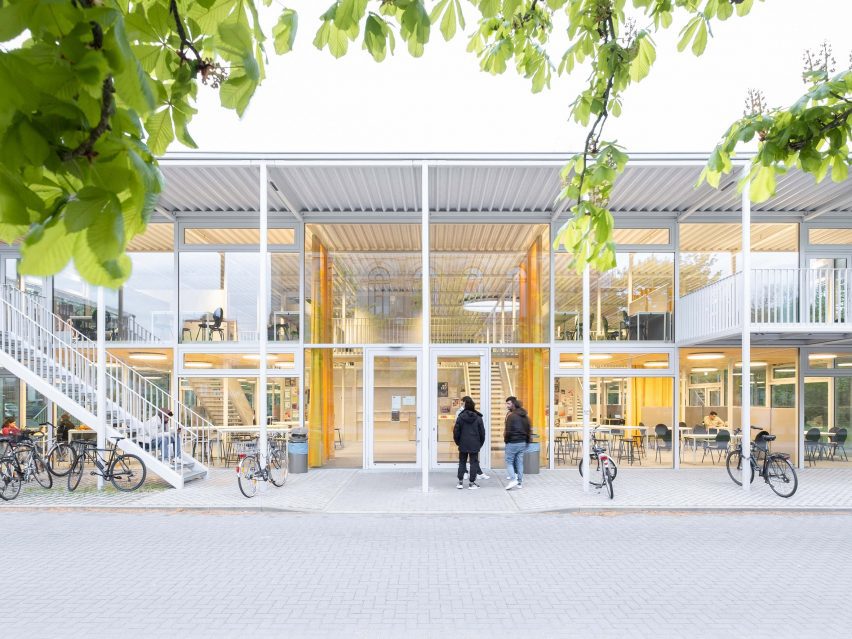
"The concept was to offer a new type of learning space that reflects contemporary means of studying, a 'countermodel' to spaces of hierarchical knowledge transfer like lecture halls," Düsing told Dezeen.
"We think there needs to be more public buildings like that, non-commercialised spaces that allow people to spend their days in comfort," he continued. "The study pavilion is a public building where people are welcome to talk, laugh, and practice student culture."
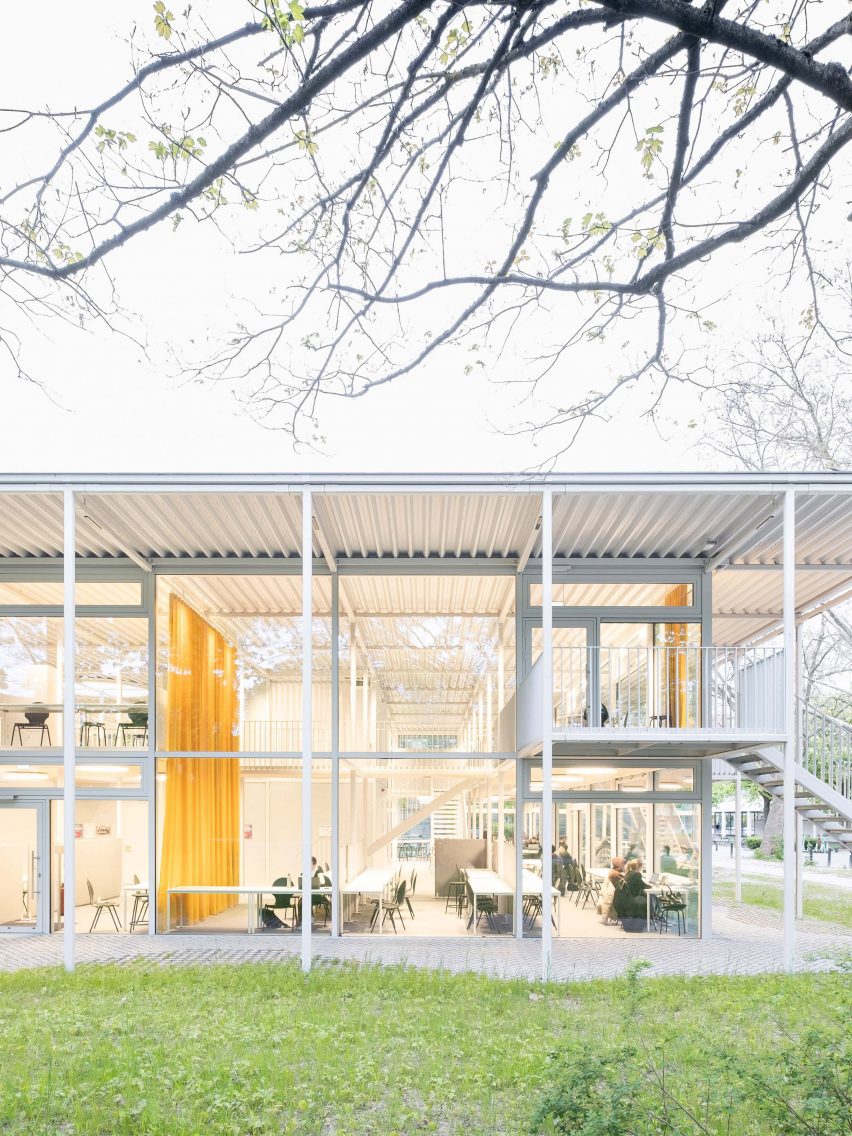
The pavilion's hybrid steel-wood structure encloses an open concept ground floor and mezzanine upper level defined by a three-by-three metre grid of columns and beams.
A fully-glazed facade wraps the perimeter of the building, visually connecting the double-height interiors to the outside, while an external canopy shelters a three-metre-deep arcade and a series of habitable balcony edges.
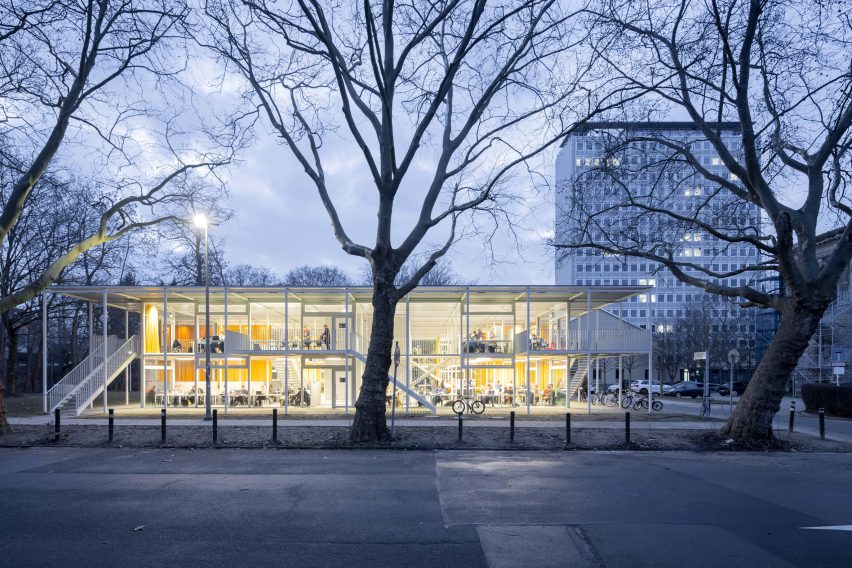
Düsing and Hacke drew on the theoretical experiments of mid-century architects Cedric Price and Yona Friedman, who explored ideas of repeatable, frame-based architectures that could become adaptable 'spatial infrastructure', for the design of the pavilion.
"The idea of a superstructure in which people are able to interact with the space and the structure was a suitable reference for us," Düsing explained. "It reflects the idea of the non-hierarchical system, the idea of social infrastructure, and ultimately the modularity and its efficiency."
The study pavilion is only loosely programmed, instead emphasising equitable 'zones' distinguished by different access points and staircases rather than full-length dividing walls.
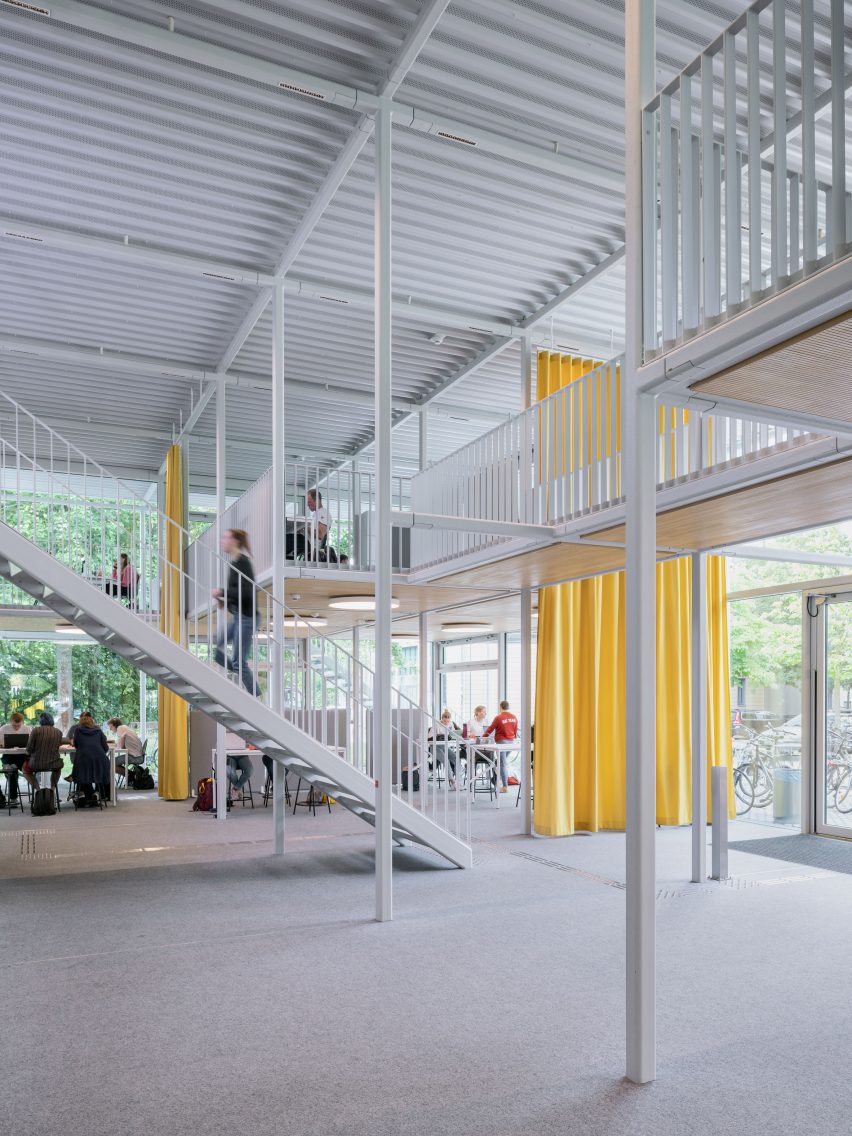
Weaving platforms with finned balustrades overlook the ground-floor activity below, creating a sense of openness and vertical porosity between levels.
"We designed a system of islands, bridges, and stairs which allow the students to choose their own way of using the space on a daily basis; there is something for everyone," Düsing said.
"There are no traffic zones or dead ends [and] we have nine entrance doors – this means you can enter the building from all sides."
Sound-absorbing curtains can be pulled across spaces to create more intimate interior sections, while carpet flooring and acoustic ceilings offer additional sound controls.
The bold yellow curtains contrast against the clean white steel structure, pale wood accents and neutral tones of the furniture, which consists of simple workstations, tables and chairs.
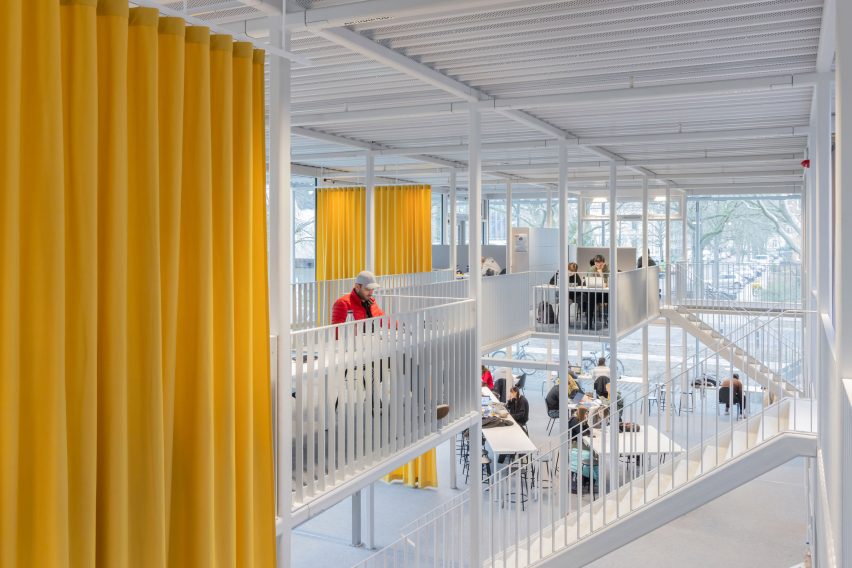
Düsing and Hacke configured the building for future disassembly, movability and reuse – characterising the pavilion as a "future material depot".
By limiting variations in building elements and bolting, rather than glueing, pieces into the steel framework, the architects hope that pieces will be added, reconfigured or moved efficiently and as needed.
"We wanted to contribute to the idea of 'design for disassembly', where not just materials are recycled but whole building elements like facade panels, beams, and columns finding new usage in other buildings," Düsing explained. "Building modular means building simple."
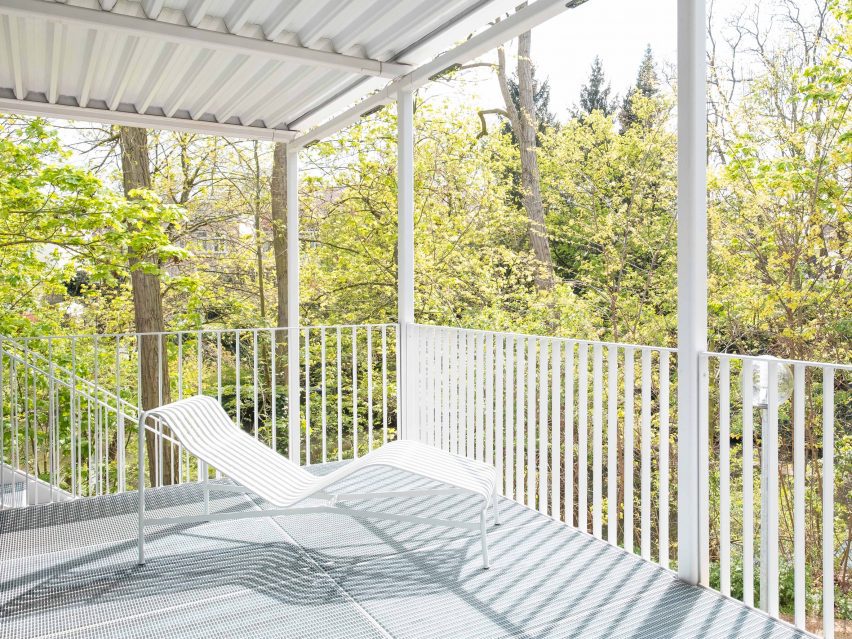
Berlin-based Düsing established his experimental and eponymous architecture studio in 2015, while also teaching at a number of universities including TU Braunschweig.
Hacke founded Büro Hacke in 2016 as a collaborative architecture studio in Berlin, aiming to engage with projects that tackle social issues across residential, cultural and educational sectors.
The Study Pavilion at TU Braunschweig was recently shortlisted as one of the seven finalists for this year's EU Mies van der Rohe Award, which was previously won by Grafton Architects in 2022 for its colonnaded teaching building at Kingston University.
The photography is by Leonhard Clemens unless otherwise stated.